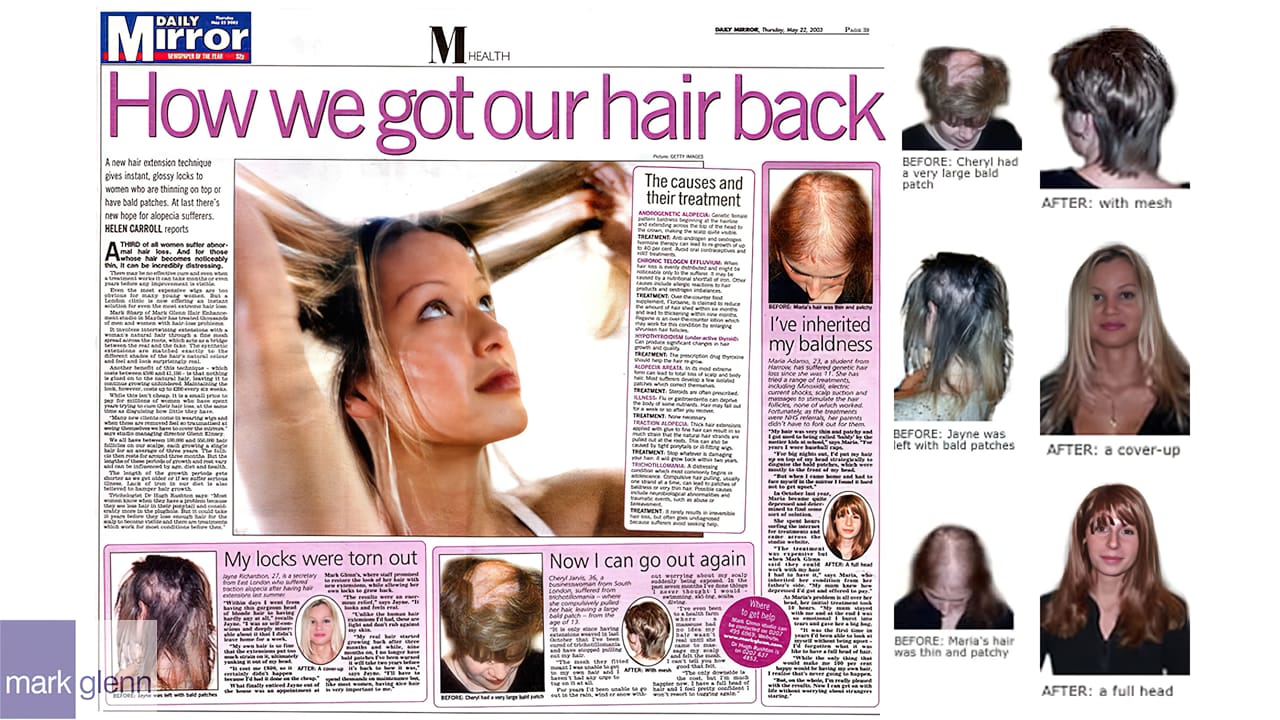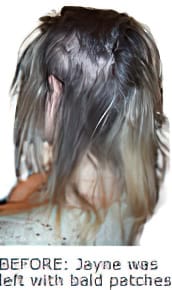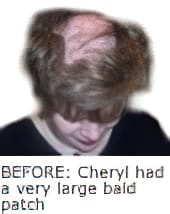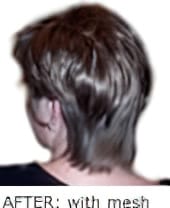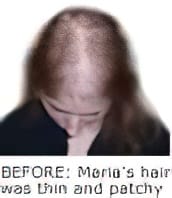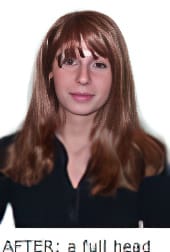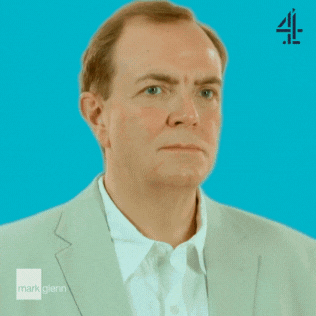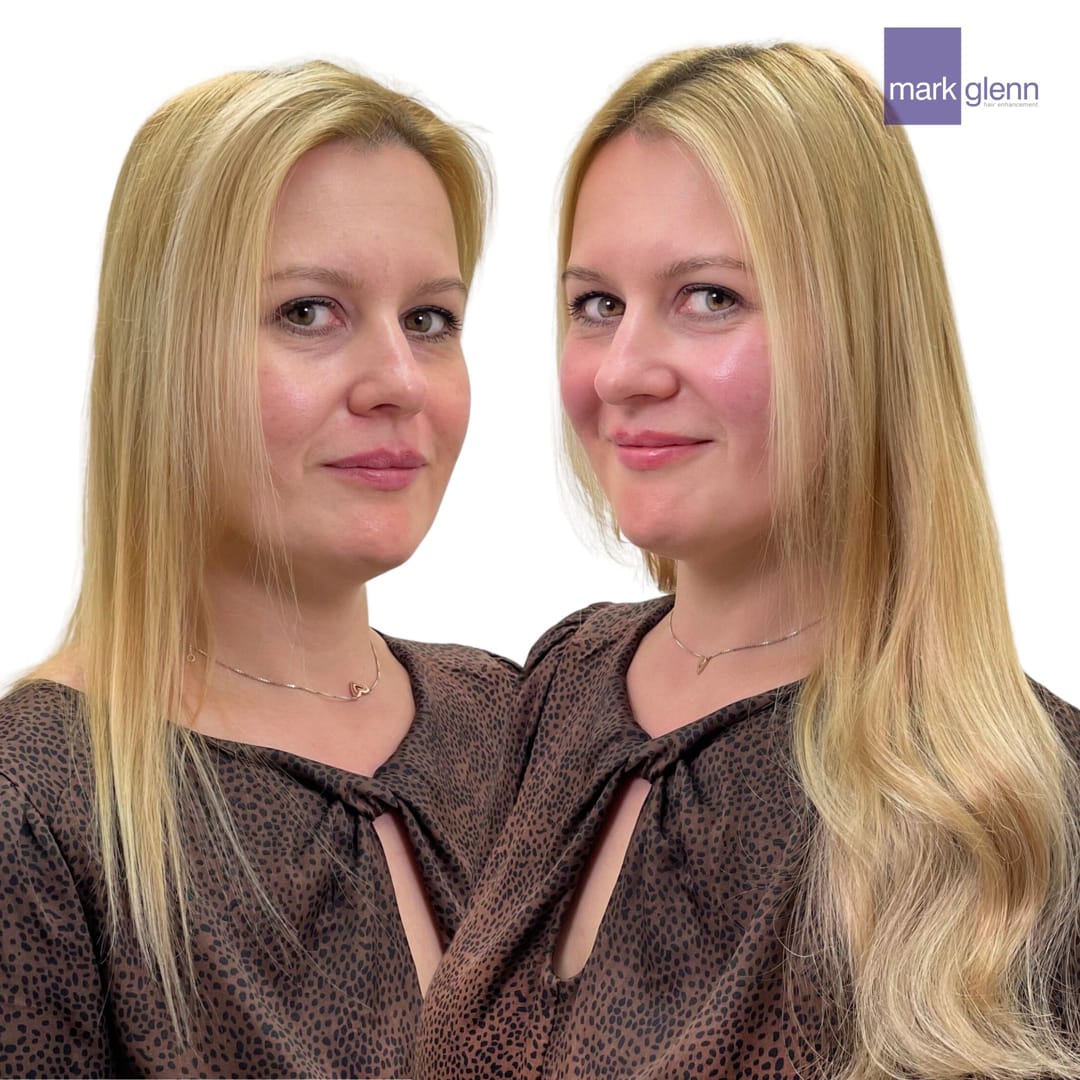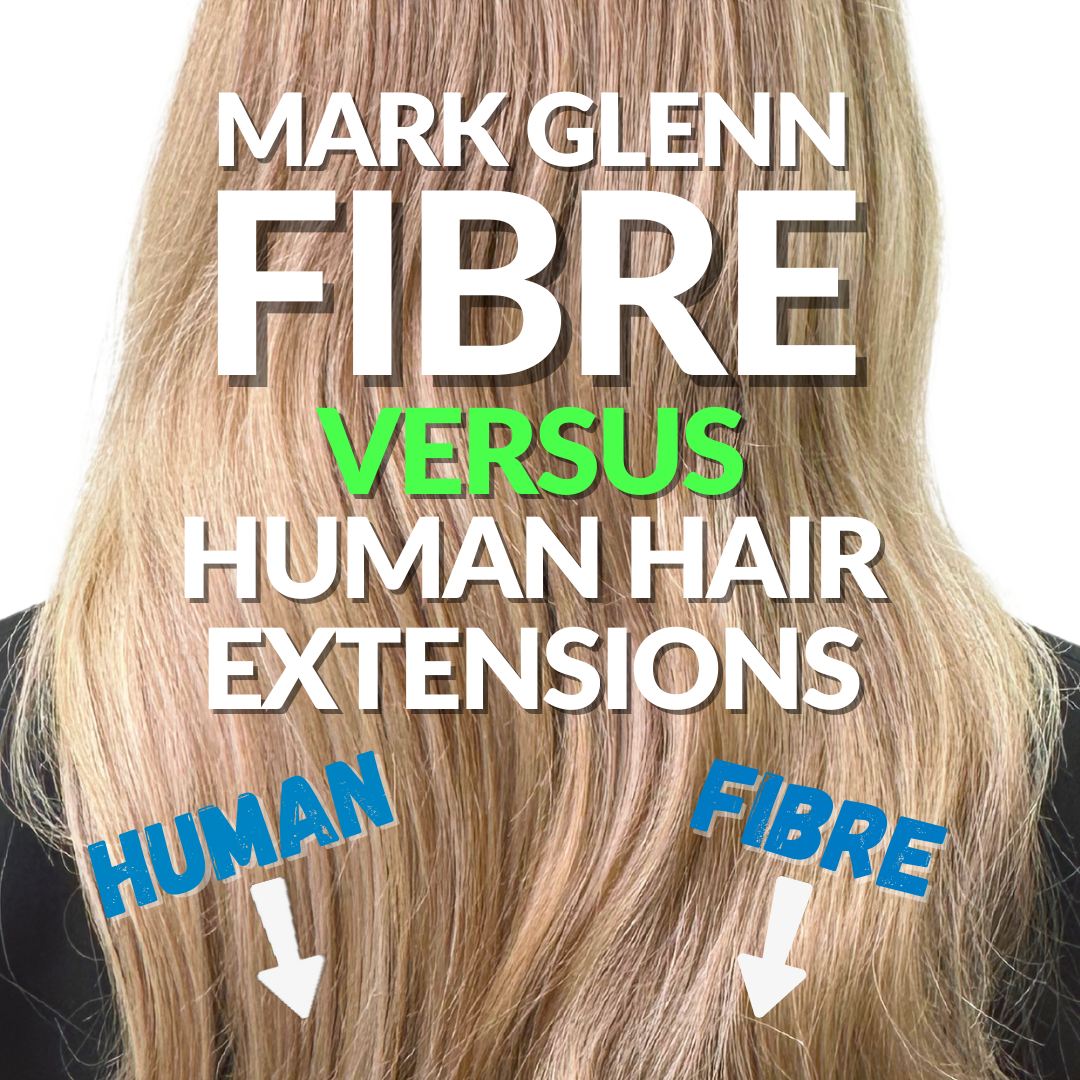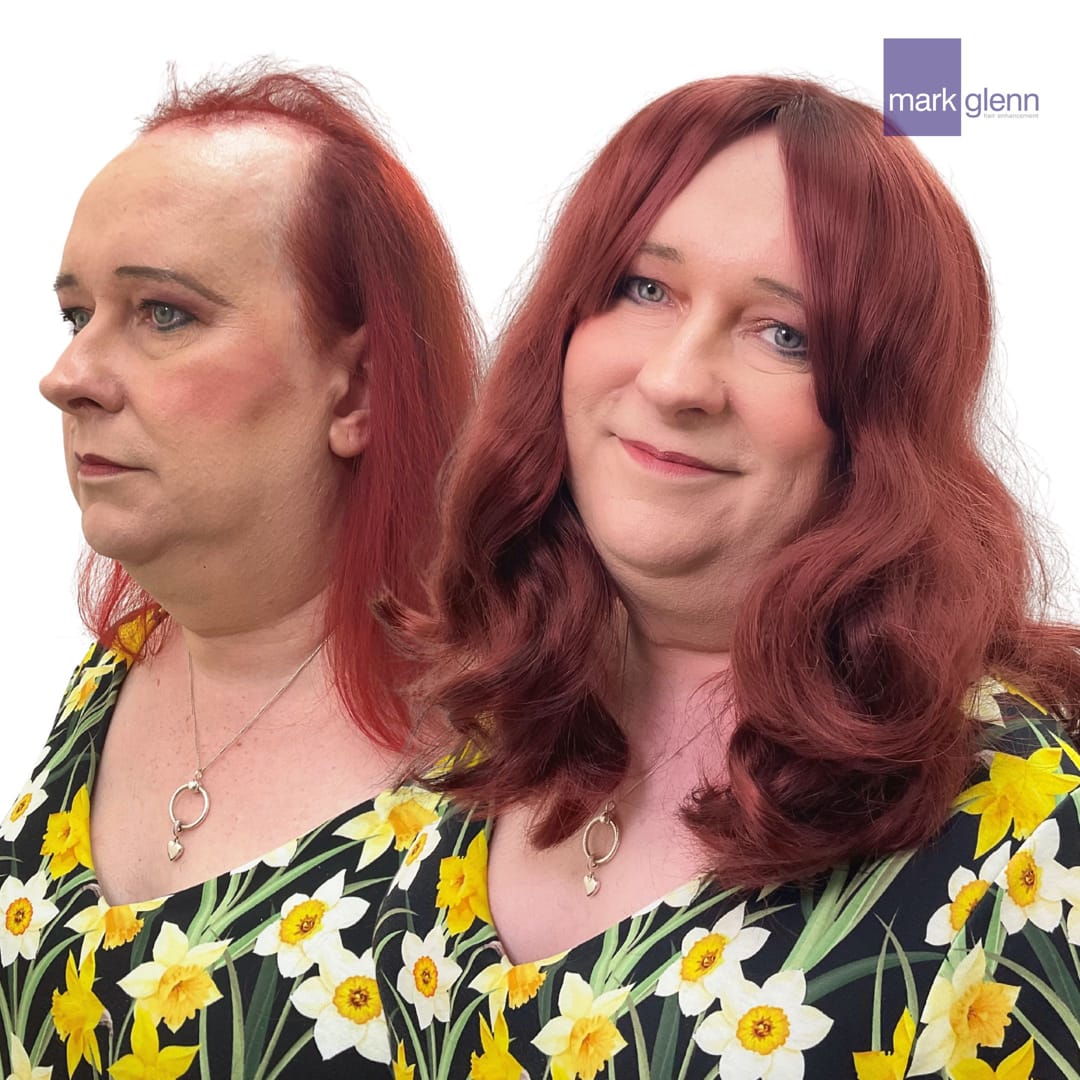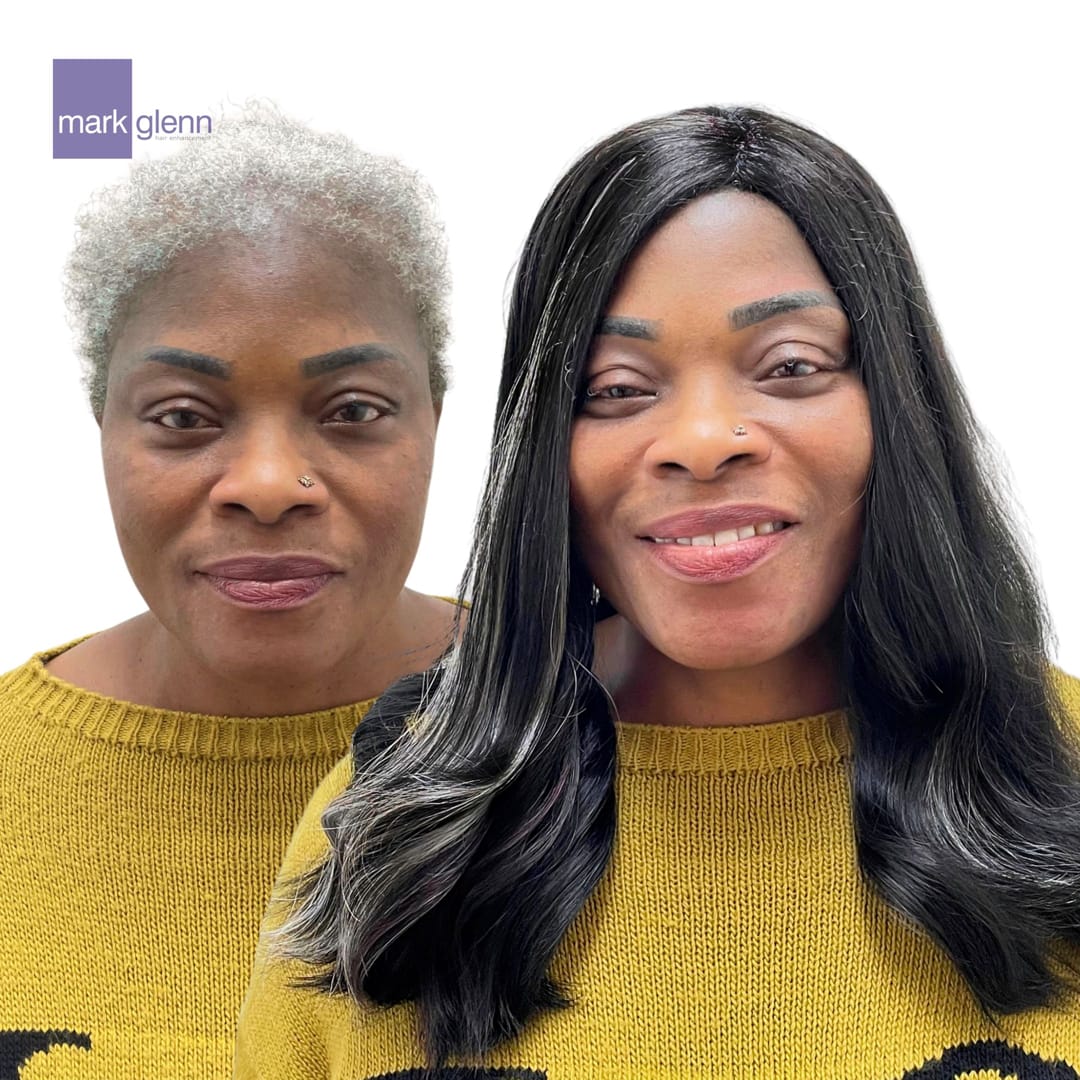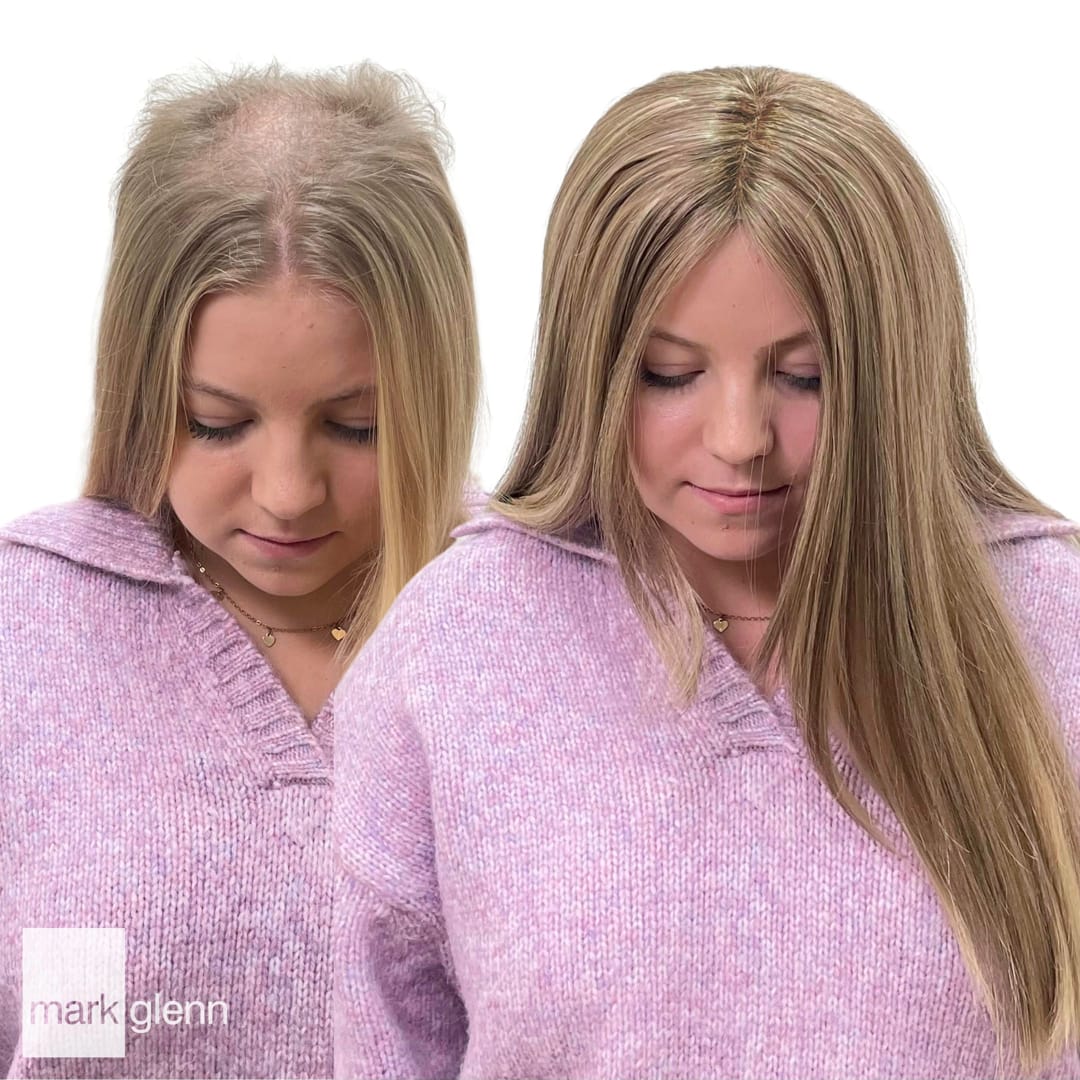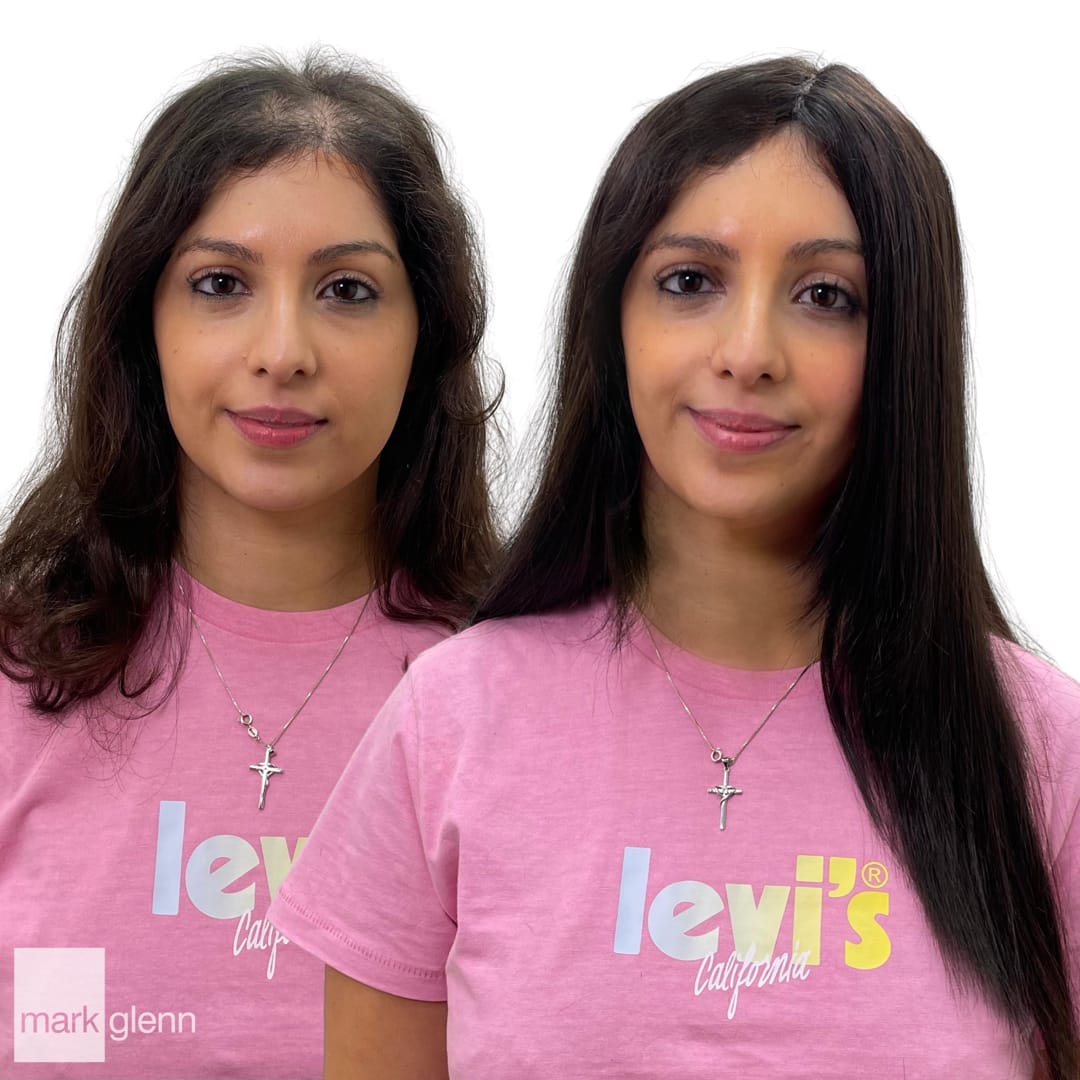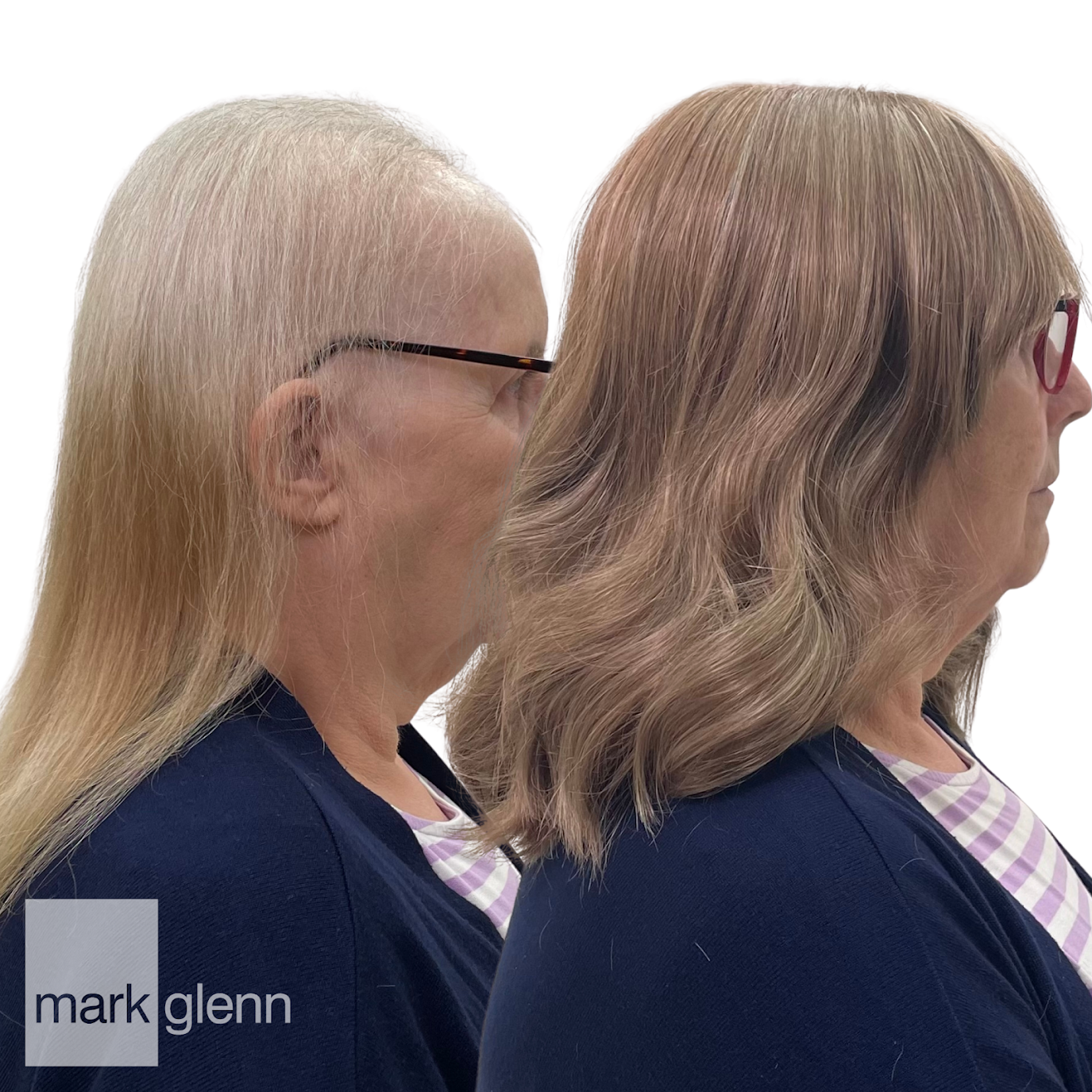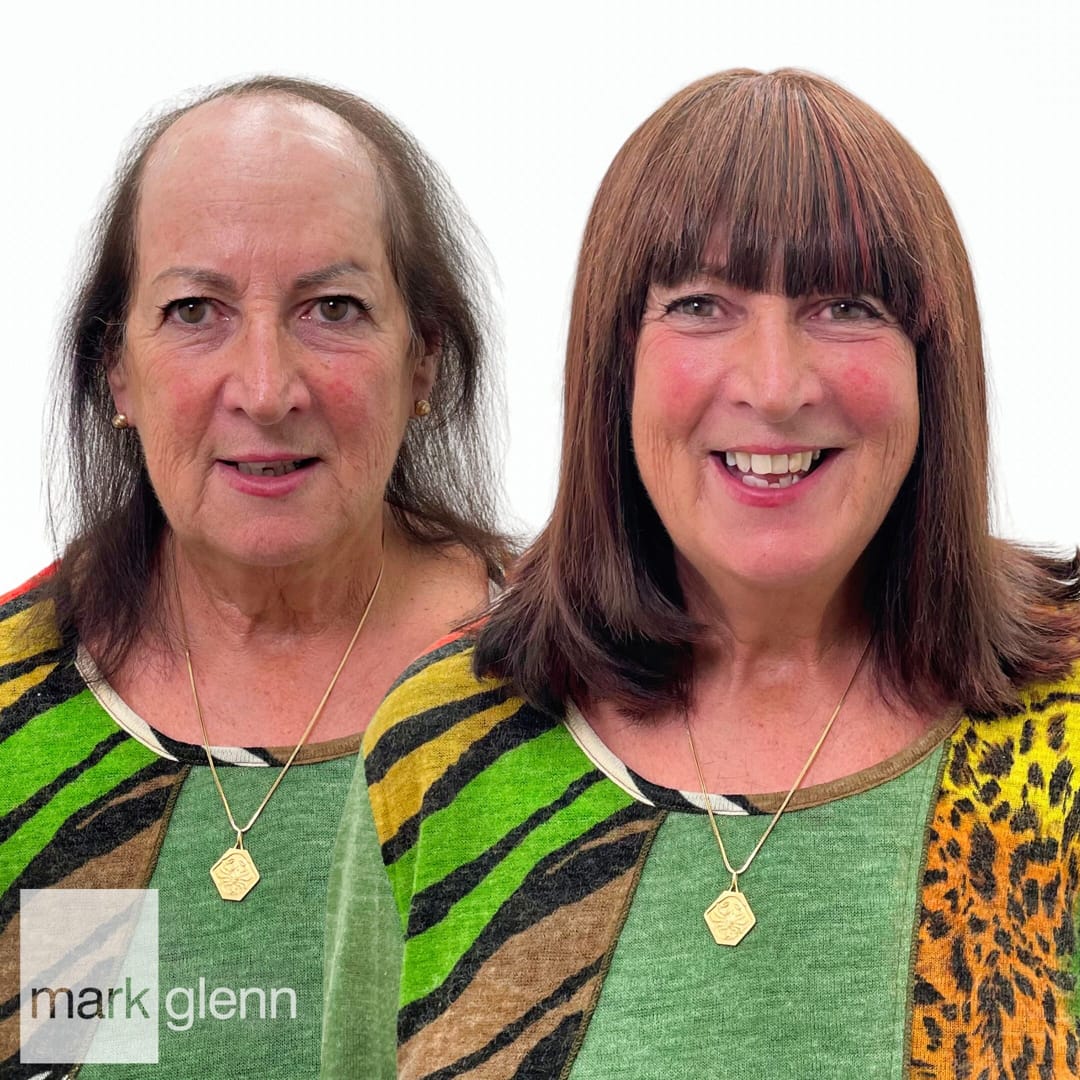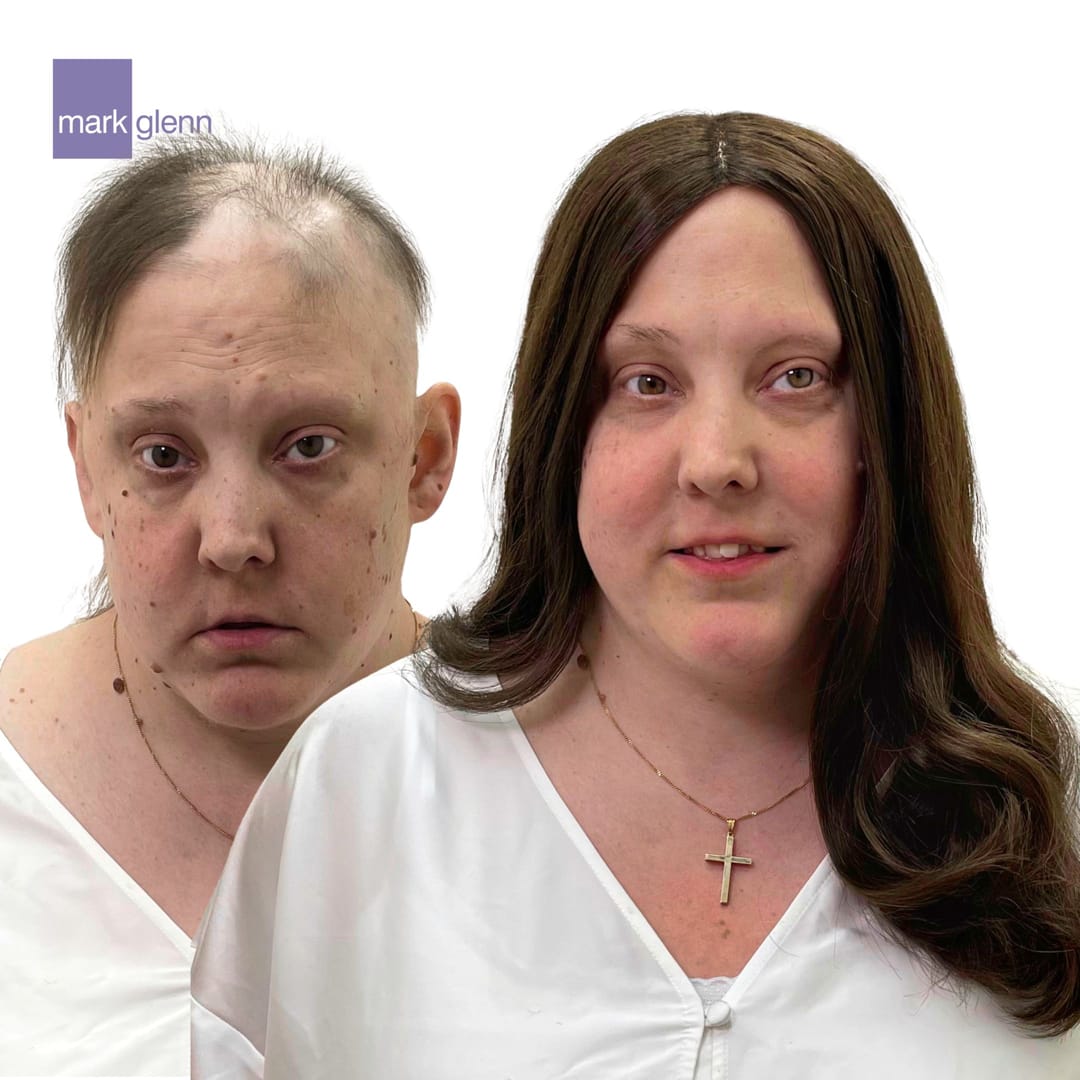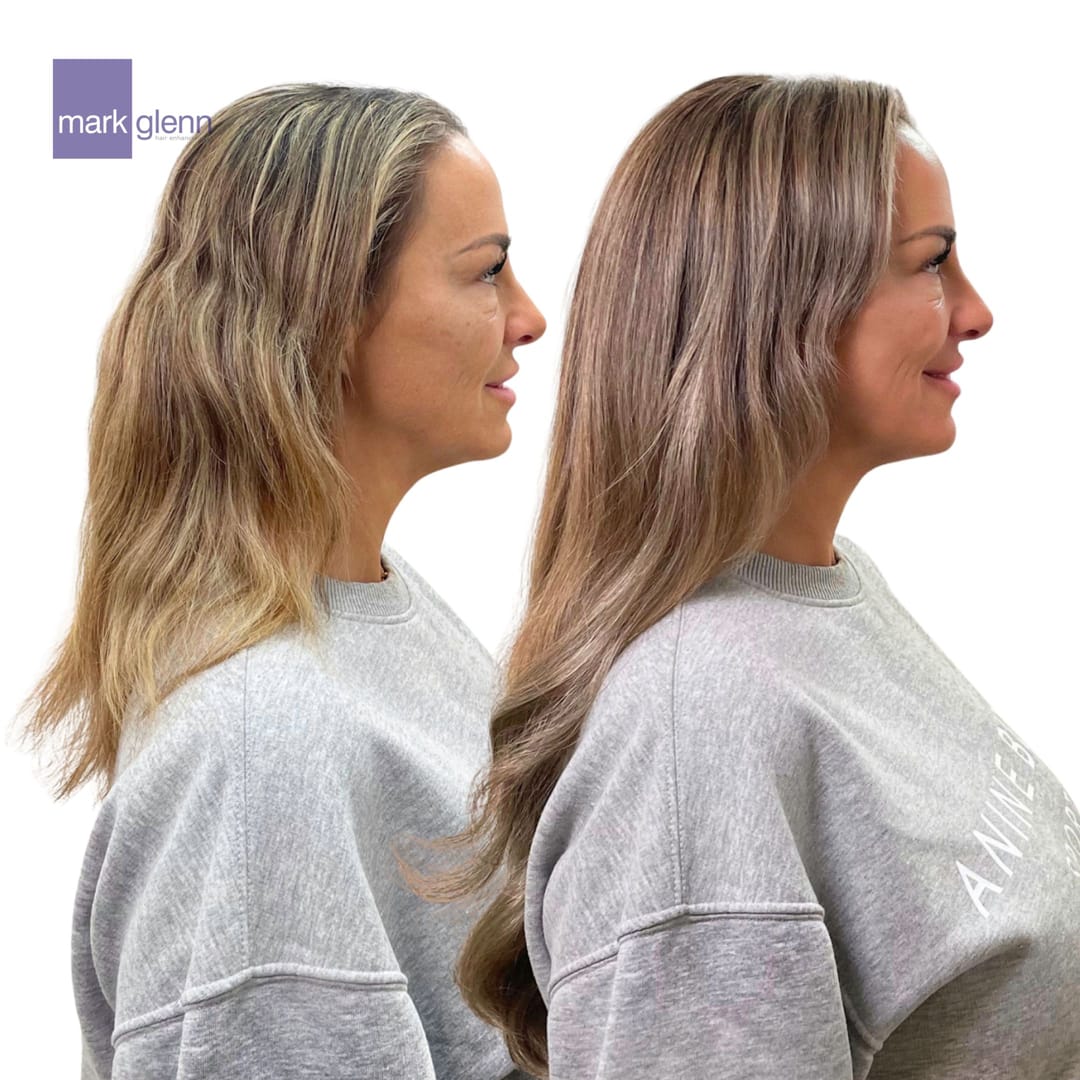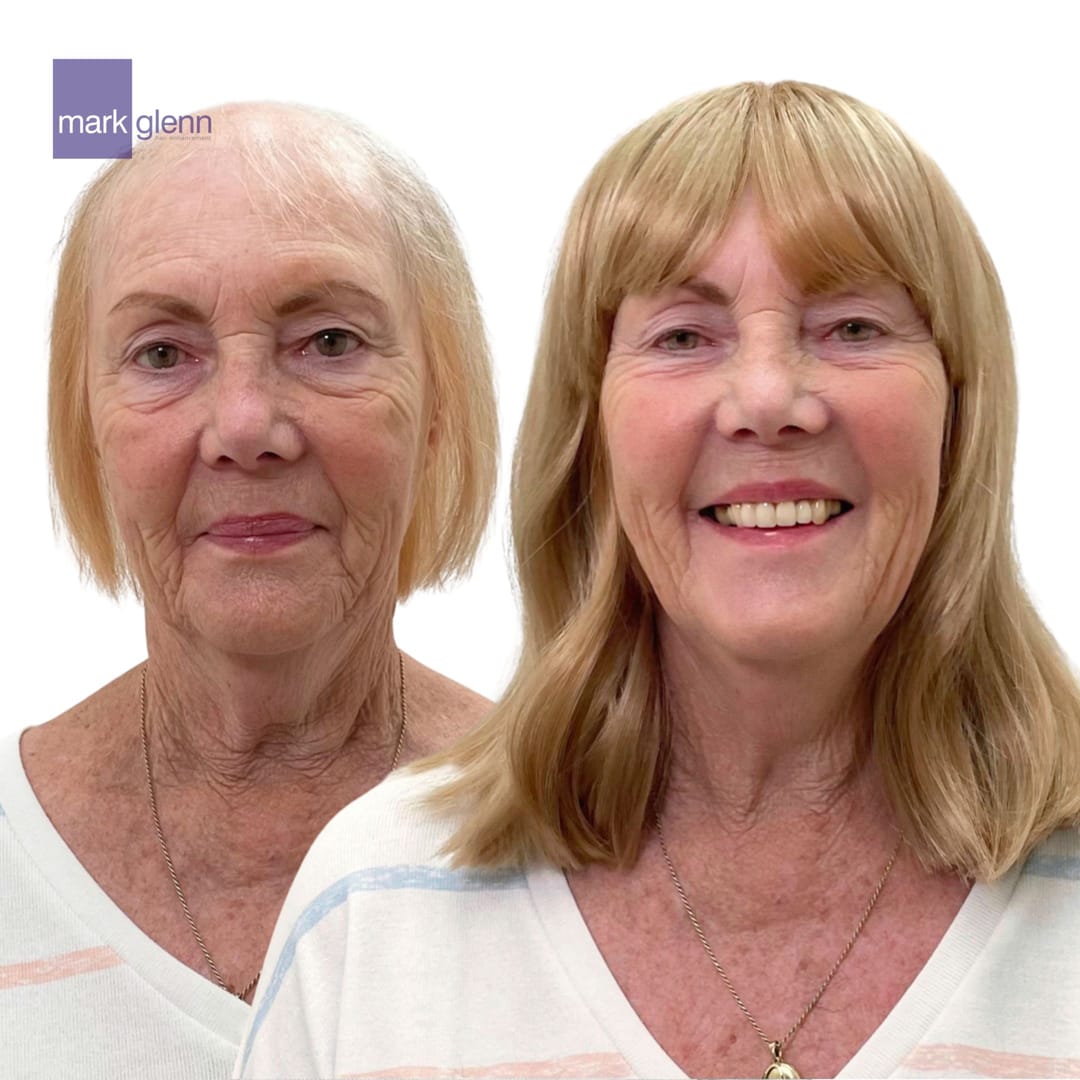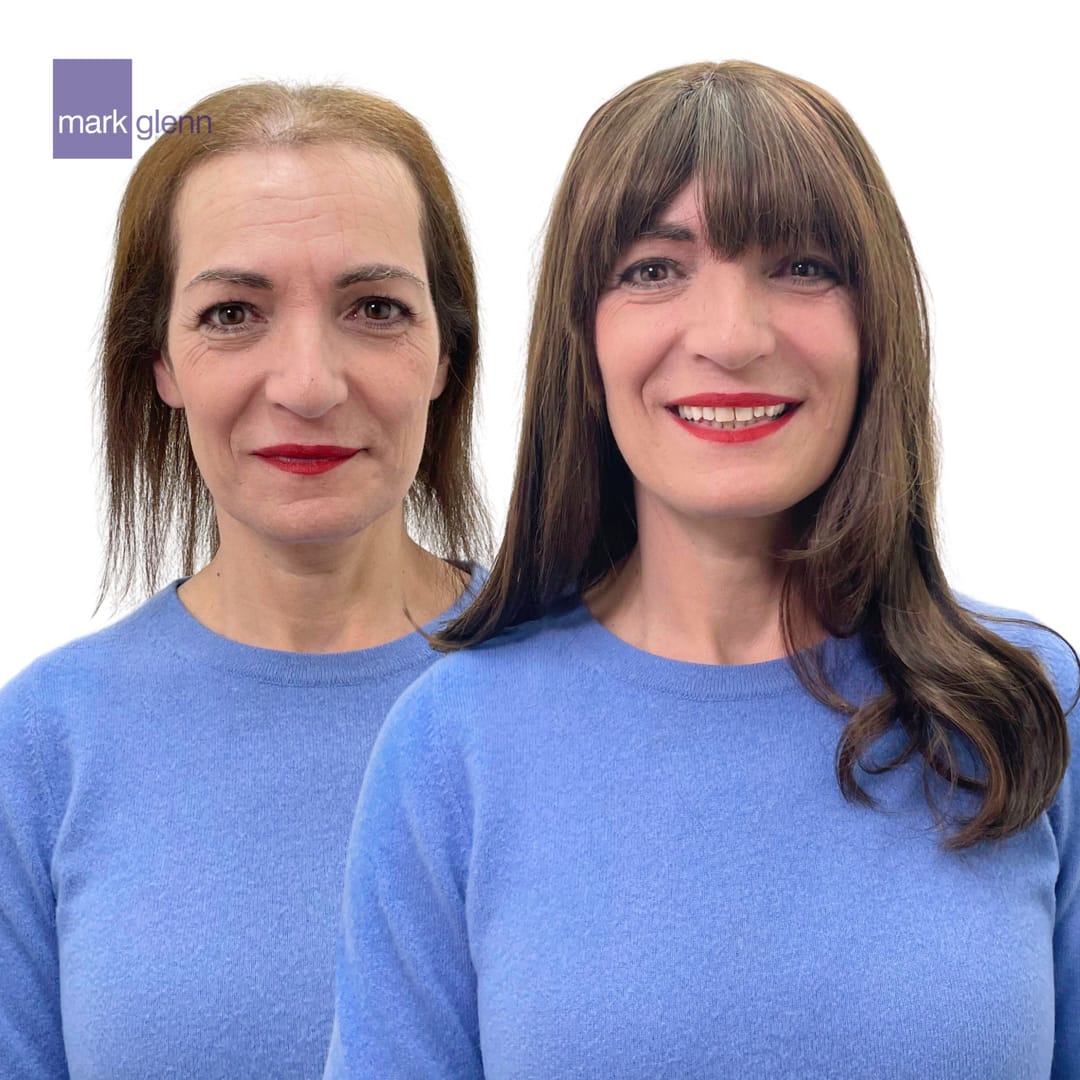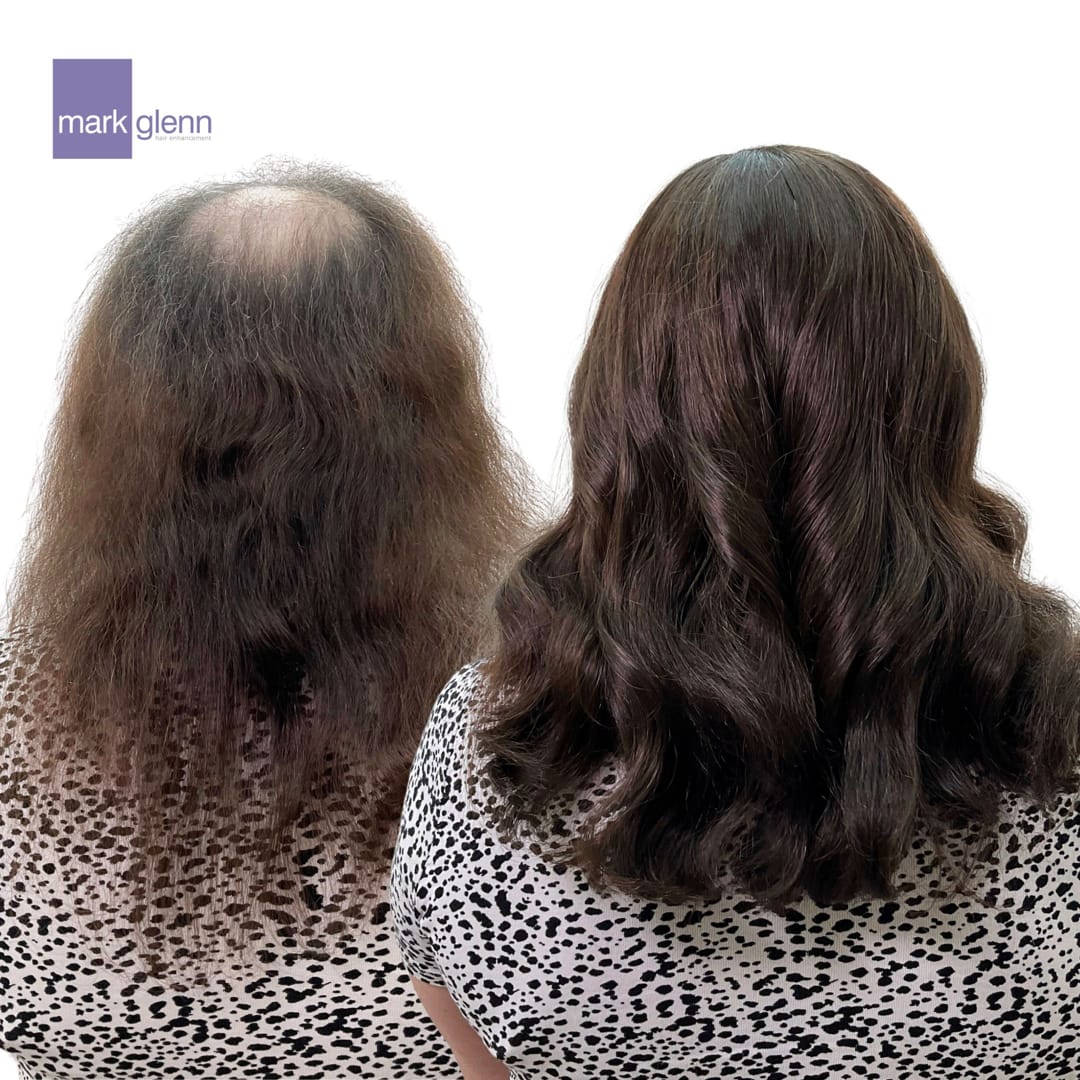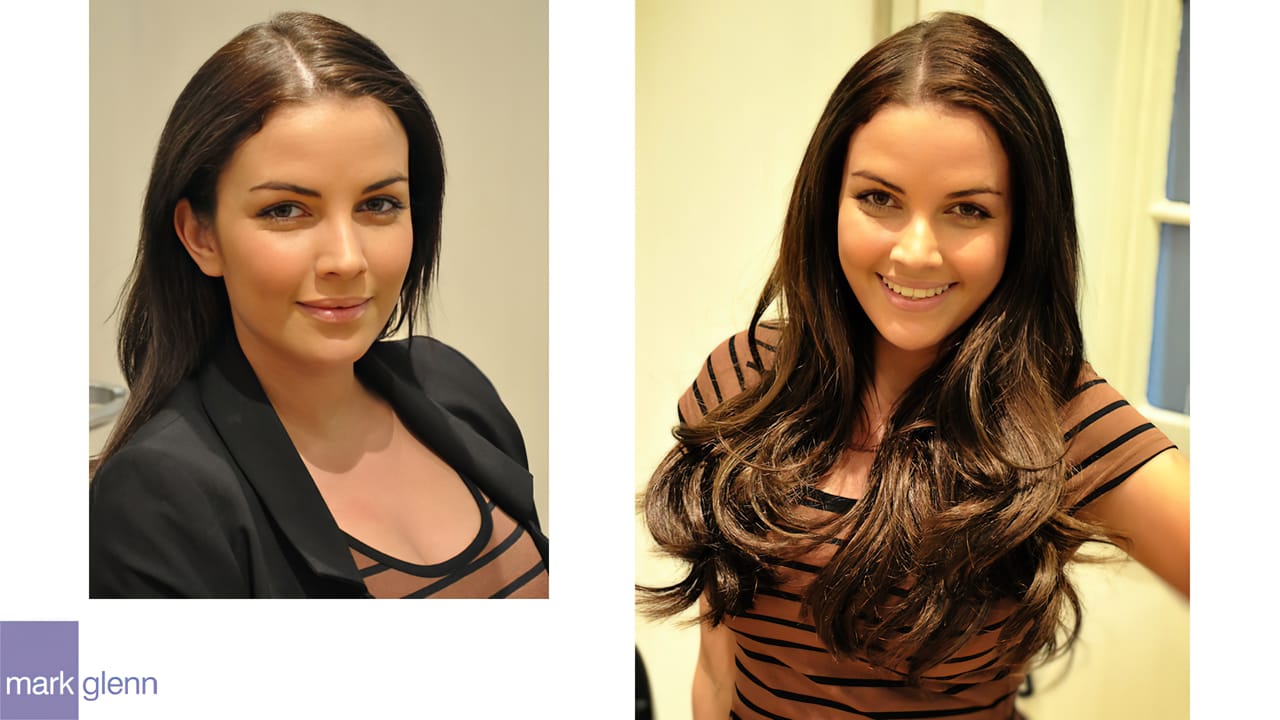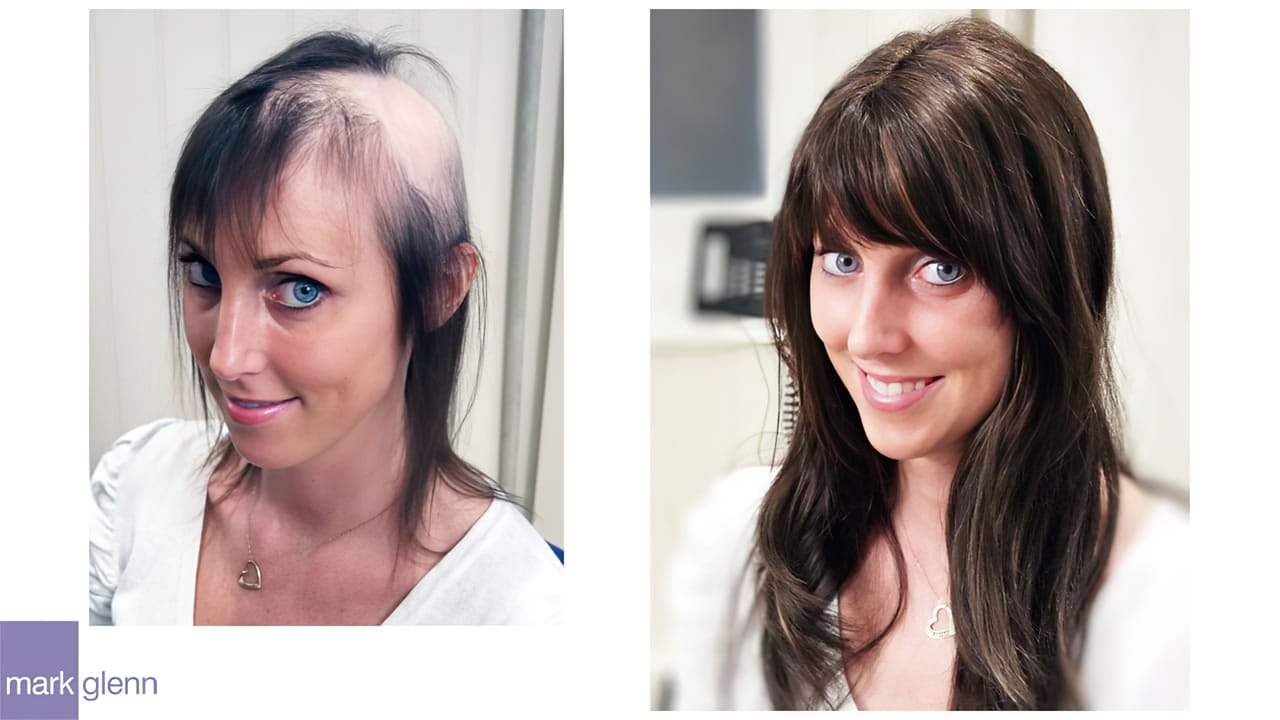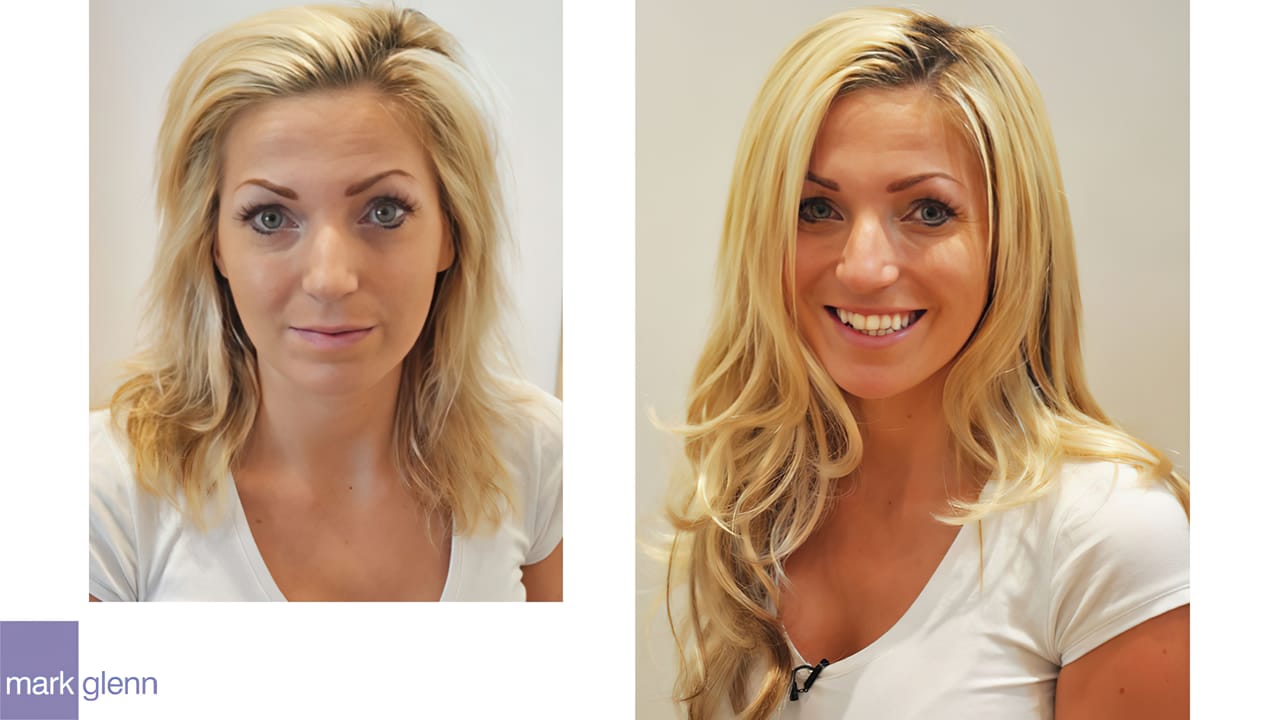Three Types of Female Hair Loss Cosmetically Fixed
Case Study #HL109-MCase Study
The Daily Mirror newspaper featured Mark Glenn in a centre-page double-spread highlighting our unique cosmetic hair enhancement for those with thinning or balding scalps.
The paper interviewed three clients - one with traction alopecia caused by human hair extensions, one with trichotillomania and one with androgenetic alopecia - and there was much praise for our revolutionary method with particular emphasis on its realism, safe application and effectiveness.
We've re-printed the article in full below.
Daily Mirror - 'How We Got Our Hair Back at Mark Glenn' (1.83mb)
How We Got Our Hair Back - Daily Mirror, London
A new hair extension technique gives instant, glossy locks to women who are thinning on top or have bald patches. At last there's new hope for alopecia sufferers. HELEN CARROLL reports
A third of all women suffer abnormal hair loss. And for those whose hair becomes noticeably thin, it can be incredibly distressing.
There may be no effective cure and even when a treatment works it can take months or even years before any improvement is visible.
A London clinic is now offering an instant solution for even the most extreme hair loss
Even the most expensive wigs are too obvious for many young women. But a London clinic is now offering an instant solution for even the most extreme hair loss.
Mark Sharp of Mark Glenn Hair Enhancement studio in Mayfair has treated thousands of men and women with hair loss problems.
It involves intertwining extensions with a woman's natural hair through a fine mesh spread across the roots, which acts as a bridge between the real and the fake. The synthetic extensions are matched exactly to the different shades of the hair's natural colour and feel and look surprisingly real.
Another benefit of this technique - which costs between £500 and £1,100 - is that nothing is glued on to the natural hair, leaving it to continue growing unhindered. Maintaining the look, however, costs up to £200 every six weeks.
While this isn't cheap, it is a small price to pay for millions of women who have spent years trying to cure their hair loss, at the same time as disguising how little they have
While this isn't cheap, it is a small price to pay for millions of women who have spent years trying to cure their hair loss, at the same time as disguising how little they have.
"Many new clients come in wearing wigs and when these are removed feel so traumatised at seeing themselves we have to cover the mirrors", says studio managing director Glenn Kinsey.
We all have between 100,000 and 350,000 hair follicles on our scalps, each growing a single hair for an average of three years. The follicle then rests for around three months. But the lengths of these periods of growth and rest vary and can be influenced by age, diet and health.
The length of the growth periods gets shorter as we get older or if we suffer serious illness. Lack of iron in our diet is also believed to hamper hair growth.
Trichologist Dr. Hugh Rushton says: "Most women know when they have a problem because they see less hair in their ponytail and considerably more in the plughole. But it could take 10 years before they lose enough hair for the scalp to become visible and there are treatments which work for most conditions before then."
"My locks were torn out"
Jayne Richardson, 27, is a secretary from East London who suffered traction alopecia after having hair extensions last summer
"Within days I went from having this gorgeous head of blonde hair to having hardly any at all," recalls Jayne. "I was so self-conscious and deeply miserable about it that I didn't leave home for a week.
"My own hair is so fine that the extensions put too much strain on it, ultimately yanking it out of my head.
"It cost me £800, so it certainly didn't happen because I'd had it done on the cheap."
What finally enticed Jayne out of the house was an appointment at Mark Glenn's, where staff promised to restore the look of her hair with new extensions, while allowing her own locks to grow back.
Unlike the human hair extensions I'd had, these are light and don't rub against my skin
"The results were an enormous relief," says Jayne. "It looks and feels real.
"Unlike the human hair extensions I'd had, these are light and don't rub against my skin.
"My real hair started growing back after three months and while, nine months on, I no longer have bald patches I've been warned it will take two years before it's back to how it was," says Jayne. "I'll have to spend thousands on maintenance but, like most women, having nice hair is very important to me."
"Now I can go out again"
Cheryl Jarvis, 36, a businesswoman from South Londond, suffered from trichotillomania - where she compulsively pulled her hair, leaving a large bald patch - from the age of 13.
"It is only since having extensions weaved in last October that I've been cured of trichotillomania and have stopped pulling out my hair.
The mesh they fitted meant I was unable to get to my own hair and I haven't had any urge to tug on it at all
"The mesh they fitted meant I was unable to get to my own hair and I haven't had any urge to tug on it at all.
"For years I'd been unable to go out in the rain, wind or snow without worrying about my scalp suddenly being exposed. In the past seven months I've done things I never thought I would - swimming, ski-ing, scuba diving.
"I've even been to a health farm where a masseuse had no idea my hair wasn't real until she came to massage my scalp and felt the mesh. I can't tell you how good that felt.
"The only downside is the cost, but I'm much happier now. I have a full head of hair and I feel pretty confident I won't resort to tugging again."
"I've inherited my baldness"
Maria Adamo, 23, a student from Harrow, has suffered genetic hair loss since she was 11. She has tried a range of treatments, including Minoxidil, electric current shocks, scalp suction and massages to stimulate the hair follicles, none of which worked. Fortunately, as the treatments were NHS referrals, her parents didn't have to fork out for them.
"My hair was very thin and patchy and I got used to being called 'baldy' by the nastier kids at school," says Maria. "For years I wore baseball caps.
"For big nights out, I'd put my hair up on top of my head strategically to disguise the bald patches, which were mostly to the front of my head
"But when I came home and had to face myself in the mirror I found it hard not to get upset."
In October last year, Maria became quite depressed and determined to find some sort of solution. She spent hours surfing the internet for treatments and came across the studio website.
"The treatment was expensive but when Mark Glenn said they could work with my hair I had to have it," says Maria, who inherited her condition from her father's side. "My mum knew how depressed I'd got and offered to pay."
As Maria's problem is all over her head, her initial treatment took 10 hours. "My mum stayed with me and at the end I was so emotional I burst into tears and gave her a big hug.
It was the first time in years I'd been able to look at myself without being upset - I'd forgotten what it was like to have a full head of hair
"It was the first time in years I'd been able to look at myself without being upset - I'd forgotten what it was like to have a full head of hair.
"While the only thing that would make me 100 per cent happy would be having my own hair, I realise that's never going to happen.
"But, on the whole, I'm really pleased with the results. Now I can get on with life without worrying about strangers staring."
The causes and their treatment
ANDROGENETIC ALOPECIA: Genetic female pattern baldness beginning at the hairline and extending across the top of the head to the crown, making the scalp quite visible.
Treatment: Anti-androgen and oestrogen hormone therapy can lead to re-growth of up to 40 per cent. Avoid oral contraceptives and HRT treatments.CHRONIC TELOGEN EFFLUVIUM: When hair loss is evenly distributed and might be noticeable only to the sufferer. It may be caused by a nutritional shortfall of iron. Other causes include allergic reactions to hair products and oestrogen imbalances.
Treatment: Over-the-counter food supplement, Florisene, is claimed to reduce the amount of hair shed within six months and lead to thickening within nine months. Regaine is an over-the-counter lotion which may work for this condition by enlarging shrunken hair follicles.HYPERTHYROIDISM (under-active thyroid): Can produce significant changes in hair growth and quality.
Treatment: The prescription drug thyroxine should help the hair re-grow.ALOPECIA AREATA: In its most extreme form can lead to total loss of scalp and body hair. Most sufferers develop a few isolated patches which correct themselves.
Treatment: Steroids are often prescribed.ILLNESS: Flu or gastroenteritis can deprive the body of some nutrients. Hair may fall out for a week or so after you recover.
Treatment: None necessary.TRACTION ALOPECIA: Thick hair extensions applied with glue to fine hair can result in so much strain that the natural hair strands are pulled out at the roots. This can also be caused by tight ponytails or ill-fitting wigs.
Treatment: Stop whatever is damaging your hair: it will grow back within two years.TRICHOTILLOMANIA: A distressing condition which most commonly begins in adolescence. Compulsive hair pulling, usually one strand at a time, can lead to patches of baldness or very thin hair. Possible causes include neurobiological abnormalities and traumatic events, such as abuse or bereavement.
Treatment: It rarely results in irreversible hair loss, but often goes undiagnosed because sufferers avoid seeking help.Where to get help:
Mark Glenn Hair Enhancement can be contacted on 0207 495 6969. Website: www.markglenn.com
Copyright © Daily Mirror
w.5000

